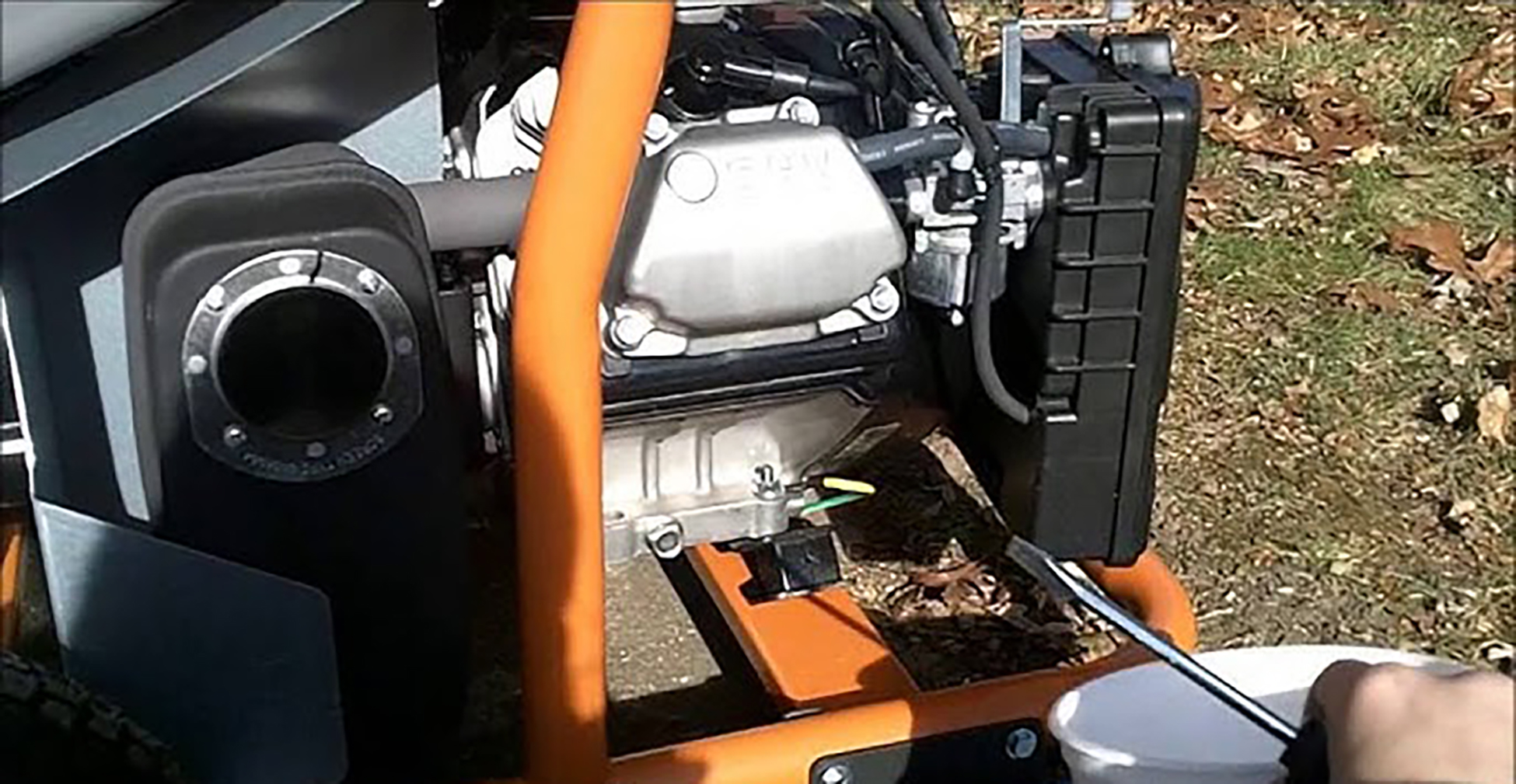
Generators are a lifesaver in an emergency or when you need to power your outdoor activities. However, they require proper maintenance to function optimally. One of the basic maintenance measures for generators is keeping the fuel fresh. If you leave old gas in your generator for a long time, it can cause starting problems and your generator may not run efficiently. In this article, we’ll guide you on how to get old gas out of your generator and keep it in good shape. How To Drain Old Gas From A Generator ?
Gather the necessary tools and materials
Before you start venting old gas from your generator, make sure you have the following tools and materials:
- Gas Container: This will hold the old gas and keep it from spilling onto the ground.
- Pliers or wrench: These tools will help you disconnect the fuel line.
- Funnel: This will allow you to easily refill the generator with fresh gas.
- Fuel Stabilizer (Optional): If you want to store the gas for a long time, adding a fuel stabilizer will prevent it from going bad.
Turn off the generator
The first step in getting old gas out of your generator is to shut it down. You can do this by following these steps:
- Disconnect the spark plug wires: This will prevent the generator from starting accidentally.
- Close the fuel valve: This will stop the flow of gas to the carburetor and make it easier to vent old gas.
Remove the gas cap and locate the fuel line
With the generator off, the next step is to remove the gas cap and locate the fuel line. Methods as below:
- Use pliers or a wrench to remove the air cap: The air cap is usually located on top of the alternator. Use pliers or a wrench to loosen and remove.
- Locate the fuel line: The fuel line is the rubber hose that connects the fuel tank to the carburetor. You’ll find it at the bottom of the gas tank.
Expel old gas
The next step is to vent the old gas from the generator. Here are the steps to follow:
- Place a gas container under the fuel line: this will collect the old gas coming out of the generator.
- Use pliers or a wrench to disconnect the fuel line: Use pliers or a wrench to loosen the clips holding the fuel line. Once the clip is loose, you can slide the fuel line off the carburetor.
- Let the old gas drain into the gas tank: When the fuel line is disconnected, the old gas will begin to flow from the generator and into the gas tank. Just be patient and wait for all the old gas to come out.
Add fuel stabilizer (optional)
If you plan to store the gas for a longer period of time, you can add a fuel stabilizer to keep it from going bad. Methods as below:
- ADD FUEL STABILIZER TO GAS CONTAINER, IF NEEDED: Follow the directions on the fuel stabilizer container and add the recommended amount to the gas container. Use a stick or whisk to mix the stabilizer with the old gas.
Add fresh gas
Once you’ve drained the old gas from your generator, it’s time to refill it with fresh gas. Methods as below:
- Refill the generator tank with fresh gas using the funnel: Carefully pour fresh gas into the tank using the funnel. Make sure not to overfill the water tank.
Reconnect the fuel line and spark plug wire
After refilling the generator with fresh gas, it’s time to reconnect the fuel lines and spark plug wires. Methods as below:
Use pliers or a wrench to slide the fuel line back onto the carburetor. Tighten the clamp to hold the fuel line in place.
- Reconnect the spark plug wire: Slide the spark plug wire back onto the spark plug and push down until it clicks into place.
Turn on the generator and test
The final step is to turn on the generator and test it to make sure it is running smoothly. Methods as below:
- To turn on the generator: Flip a switch or turn the key to start the generator.
- Let it run for a few minutes to make sure it runs smoothly: Let the alternator run for a few minutes to make sure fresh gas has entered the carburetor and the engine is running smoothly. Listen for any unusual noises or vibrations, and check that the generator is producing the desired power output.
Conclusion: Bleeding old gas out of a generator is a simple process that anyone can do with the right tools and materials. It is vital to keep your generator in good condition by using fresh gas and performing regular maintenance. By following the steps outlined in this article, you can ensure your generator is ready to use when you need it. Remember to run your generator regularly and change the gas every few months to avoid problems starting or running. A well-maintained generator can be a valuable asset during power outages, outdoor events, and other emergencies.
back to menu ↑Common problem
How Often Should I Bleed Old Gas Out of the Generator?
If the generator has been idle for more than 30 days, it is best to drain the old gas from the generator. Gasoline will begin to degrade after this time, which can cause starting problems and damage your generator’s carburetor.
Can I dispose of old gas by pouring it down the drain?
No, it’s not safe to pour old gasoline down the drain. Gasoline is a hazardous substance that harms the environment and pollutes groundwater. Instead, take the old gas to a hazardous waste collection point or contact your local waste management agency for disposal instructions.
Do I need to add fuel stabilizer when storing gas?
Adding fuel stabilizers helps extend the shelf life of gasoline and prevents it from going bad. If you plan to store the gas for more than a few weeks, it is a good idea to add a fuel stabilizer to the gas container.
Can I use old gasoline from a generator in my car or lawn mower?
It is not recommended to use old gasoline from generators on other gasoline powered machines. Over time, gasoline deteriorates and loses its potency, which can cause problems with starting and running. It is best to safely dispose of the old gas and use fresh gas in your other machines.
What should I do if my generator won’t start after venting old gas?
If your generator won’t start after you’ve bled out old gas, there may be other issues that need to be addressed. Check the spark plugs, air filter and carburetor to make sure they are clean and functioning properly. If you continue to have problems, consult your owner’s manual or consult a qualified technician for assistance.









